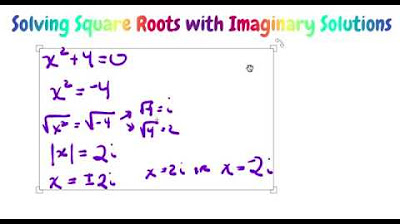Edexcel A level Maths: (Part 2) 4.3 Using Partial Fractions In Binomial Expansion
Summary
TLDRThis tutorial covers the method of partial fractions, beginning with expressing 8x+4 over (1-x)(x^2+x) as partial fractions. It guides through finding constants A and B, then expands the fraction in ascending powers of x. The video also discusses the validity of binomial expansions, determining the range of x values for which the expansions are valid. Lastly, it addresses improper fractions, performing polynomial long division, and expanding fractions up to the term in x squared using binomial expansion.
Takeaways
- 📚 The video tutorial focuses on part 2 of a 4-part series on using partial fractions.
- 🔍 The first example involves expressing \( \frac{8x + 4}{(1 - x)(x^2 + x)} \) as partial fractions.
- 📐 The process starts by setting up the equation with a common denominator and comparing numerators to form equations for constants A and B.
- 🔢 To find A, the tutorial uses substitution by setting \( x = 1 \), resulting in \( a = 4 \).
- 🔄 Similarly, to find B, \( x = -2 \) is substituted, yielding \( b = -4 \).
- 📝 For Part B, the fraction from Part A is expanded in ascending powers of X up to the term in X.
- 📈 The binomial expansion formula is applied to expand the terms, with careful attention to replacing variables as needed.
- 📉 Part C discusses the set of values for X for which the expansion is valid, considering the modulus of X.
- 🔑 The tutorial emphasizes the importance of checking if a fraction is improper before proceeding with partial fraction decomposition.
- 📐 For the second question, long division is used to handle an improper fraction, resulting in a quotient and a remainder.
- 🔎 Constants B and C are determined using substitution, with B found to be -2 and C as 3.
Q & A
What is the goal of the video tutorial?
-The goal of the video tutorial is to explore partial fractions, focusing on expressing a given rational expression and using binomial expansion for the second part.
What is the initial expression presented in Part A?
-The initial expression in Part A is (8x + 4) / ((1 - x)(2 + x)), and the goal is to express this as partial fractions.
How is the partial fraction decomposition set up in Part A?
-The expression is set up as A / (1 - x) + B / (2 + x), where A and B are constants to be determined.
How is the value of A determined?
-The value of A is determined by substituting x = 1, simplifying the equation to 12 = 3A, which gives A = 4.
How is the value of B determined?
-The value of B is determined by substituting x = -2, which simplifies to -12 = 3B, giving B = -4.
What does the final partial fraction expression look like after finding A and B?
-The final partial fraction expression is 4 / (1 - x) - 4 / (2 + x).
What is the next task in Part B of the question?
-In Part B, the task is to expand the partial fractions in ascending powers of x using the binomial expansion.
Why is factorization required before applying the binomial expansion formula?
-Factorization is required because the first term in the second fraction (2 + x) is not 1, so it must be rewritten as 2(1 + (1/2)x) to apply the binomial expansion.
What is the final expanded expression in Part B?
-The final expanded expression after using the binomial expansion is 2 + 5x + (7/2)x².
What is the valid range of x for the expansion?
-The valid range of x for the expansion is -1 < x < 1, determined by analyzing the conditions for the two binomial expansions used.
Outlines

This section is available to paid users only. Please upgrade to access this part.
Upgrade NowMindmap

This section is available to paid users only. Please upgrade to access this part.
Upgrade NowKeywords

This section is available to paid users only. Please upgrade to access this part.
Upgrade NowHighlights

This section is available to paid users only. Please upgrade to access this part.
Upgrade NowTranscripts

This section is available to paid users only. Please upgrade to access this part.
Upgrade Now5.0 / 5 (0 votes)





